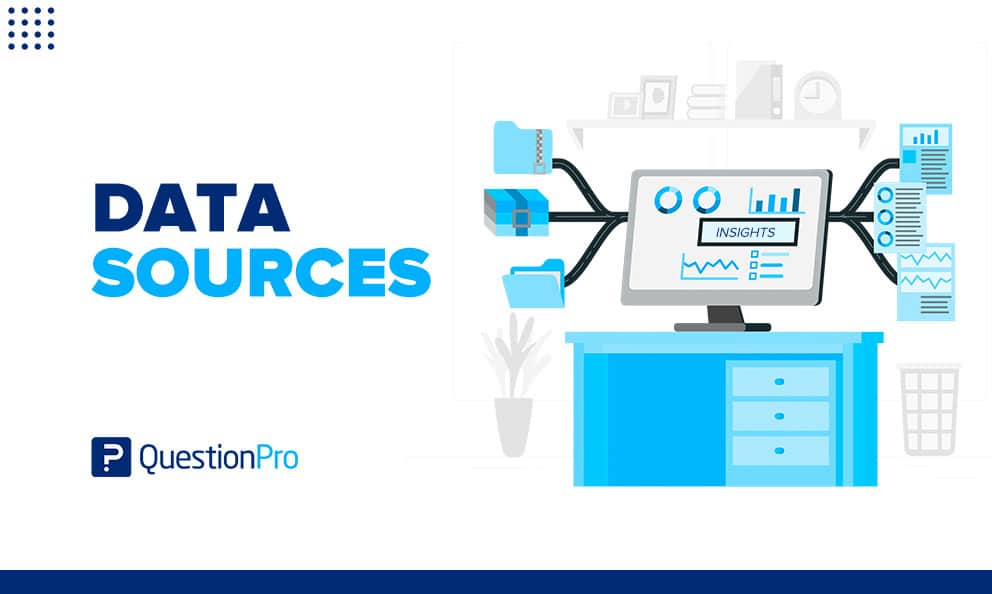
It was probably in a science lesson when you were a kid that you first heard the phrase “data source.” The “source” at the time was very certainly a table of averages derived from a bigger data set. It’s clear why we call that a source: it’s how we see the data coming. Is this, however, what we mean when we say “data source”?
This data specifies where the database tables are stored and where the enterprise software runs logic objects. A data source can be the first place where data is created or where physical material is digitized. But even the most polished data can be used as a source if another process accesses and uses it. So, how can businesses collect and utilize all of this data? Let’s find out.
What is Data Source?
A data source is a location where information is gathered. The source might be a database, a flat-file, an XML document, or any other format that a system can read. The input is captured as a set of records containing information utilized in the workflow. Customer information, accounting numbers, sales, logistics, and other information can all be included.
You’ve undoubtedly heard the term “data source” for fact-checking. When reading an article that includes figures. You may wonder who the provider is, or if it’s a blog or a government website. What you’re searching for in this case is authority rather than data. However, we both use the same term.
Types of Data Source
Contributions are expanding the diversity of data collection, content, type, and location. The majority of data sources may still be divided into two groups based on technology: machine data sources and file data sources.
Machine and file data sources are stored, retrieved, and used differently.
-
Machine data sources
Users designate machine data sources, which must live on the system that is absorbing data and are not readily shared. Machine data sources, like other data sources, provide all of the information needed to connect to data, including essential software sources and a driver manager, but users just need to use the DSN as a shortcut to initiate the connection or query the data.
Environment elements, database configuration settings, or a place internal to the computer or application are used to store connection information. For example, an Oracle data source will contain information on which devices to use, the driver engines, or other pertinent parts of a standard connection chain, like system and user IDs and verification.
-
File data source
All of the link information is included within a single, shared computer file in file data sources or research repositories. File data sources are not allocated to various applications, systems, or users.
Hence do not have a data source name (DSN) like machine data sources. Each file contains a router for just one data source.
Like every computer database, file data sources may be edited and copied. Users and systems can share a common connection (by transferring the data source between individual computers or servers), and data connection processes can be streamlined.
For example, by storing a data source on some kind of shared resource that may be accessed by several programs and users at the same time.
A data source’s functionality
Finally, they are designed to assist users and applications in connecting to and moving data to its proper location. They collect and store crucial technical data in one location. As a result, data consumers may concentrate on processing and determining how to best use their data.
The goal is to present links in a more user-friendly and understandable manner. This necessitates the use of data sources to integrate different systems more effectively. Because they relieve shareholders of the burden of dealing with and troubleshooting complicated but low-level connection data.
And, while this connection data is concealed, it is always available when needed. This data is also saved in uniform places and formats, which can make other operations like migrations and planned system structure changes easier.
Here are some examples of data sources in action.
Various databases are examples of data sources.
Consider a shoe brand that sells things online. The website uses data from a stock database to determine if a product is out of stock. The stock records are a data source in this scenario, which is retrieved by the web program that provides the website to consumers.
Focusing on how the word is used in the context of database administration will assist in understanding what types of data sources exist, how things operate, and when they are beneficial.
Consider the following: Online theater play tickets are being purchased by a viewer. The client must be informed as to which seats are available or which are filled out on the website. This data is gathered from a ticket database. The data source here is a database. A successful transaction depends on the correctness of the data and the dependability of the link to the data source.
Conclusion
Businesses may use knowledge to adapt to changing market situations, solve logistical problems, and discover new methods to improve the consumer experience. Data sourcing might give you a fresh look at your company’s activities.
QuestionPro is much more than survey software; we have a solution for each specific problem and industry. We also offer data management software, such as our research repository called Insights Hub.
LEARN ABOUT: Customer data management







